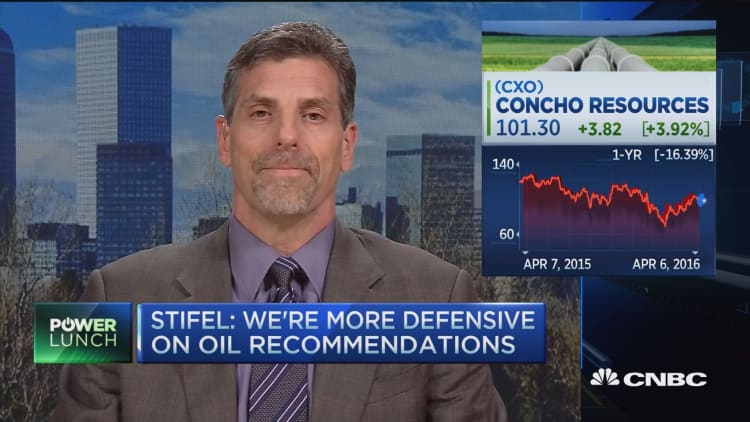


U.S. oil prices fell over 1 percent on Thursday after industry data suggested a key pipeline shutdown had not reduced crude flows to the U.S. storage base by as much as expected.
Market intelligence firm Genscape reported a build of 255,804 barrels at the Cushing, Oklahoma delivery hub for U.S. crude futures during the week to Tuesday, traders who saw the data said.
The build came despite TransCanada having shut since Saturday its 590,000 barrels per day (bpd) Keystone crude pipeline that moves crude to Cushing and Illinois.
Genscape did note a 481,485-barrel decline at Cushing in the five days to Tuesday, apparently due to the Keystone shutdown that was caused by a potential leak, traders said. But that wasn't enough to offset total inflows for the week.
"I guess people were expecting even more impact from the Keystone closure," said a trader.
Brent futures were down 36 cents, or 1 percent, at $39.47. U.S. crude futures fell 49 cents, or 1.3 percent, to $37.26 per barrel.
Higher Iraqi oil exports also underlined the global oversupply situation despite a positive U.S. government report on Wednesday on U.S. crude supply-demand that drove prices up by 5 percent.
U.S. crude inventories fell 4.9 million barrels in the week to April 1, compared with analysts' expectations for an increase of 3.2 million barrels, according to data from the Energy Information Administration on Wednesday.
"We are in the aftermath of yesterday's (EIA) data, but if you zoom out there's still oversupply and record inventories," said Hans van Cleef, senior energy economist at ABN Amro in Amsterdam.
"Production numbers from places like Iran and Iraq are in focus with people looking to see how it translates into the overall supply picture."
Oil exports from Iraq's southern ports have risen to an average of 3.494 million barrels per day (bpd) in April, an official from the state-run South Oil Company said on Thursday. This was above the 3.286 million bpd average for March.
A planned meeting of major oil producers on April 17 to freeze output around current levels, which in most cases remains at or near record highs, would do little to reduce an overhang in production with at least 1 million barrels of crude pumped every day in excess of demand.
Feeding into doubts about whether any deal can be done, Iran's foreign minister said Tehran was determined to regain its share of the oil market after sanctions imposed on the country were lifted under a deal reached with six major powers, the semi-official Tasnim news agency reported.
Goldman Sachs said it was "less willing to believe in a sustained OPEC production freeze or cut" and instead expected OPEC's production to rise by 600,000 barrels per day (bpd) this year and by 500,000 bpd in 2017.
As a result of this, and also production data from the United States, Goldman said it was "somewhere between in line and modestly bearish for prices ... (and that) $35 per barrel WTI is not too high and not too low but just right."

